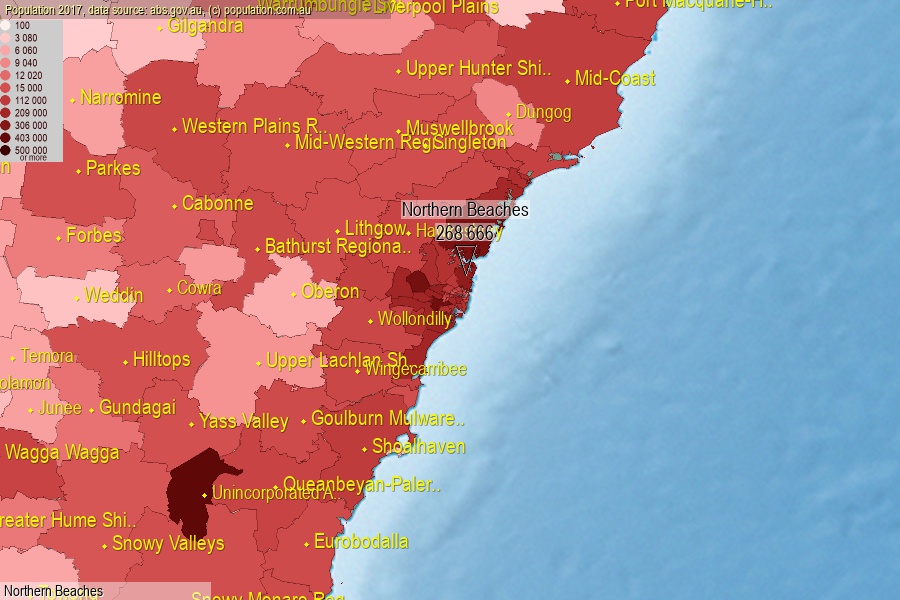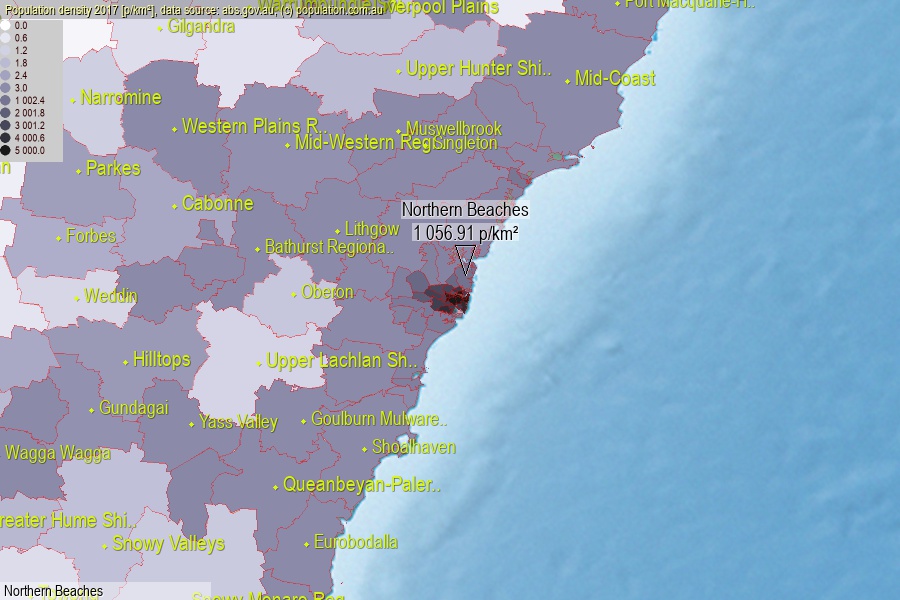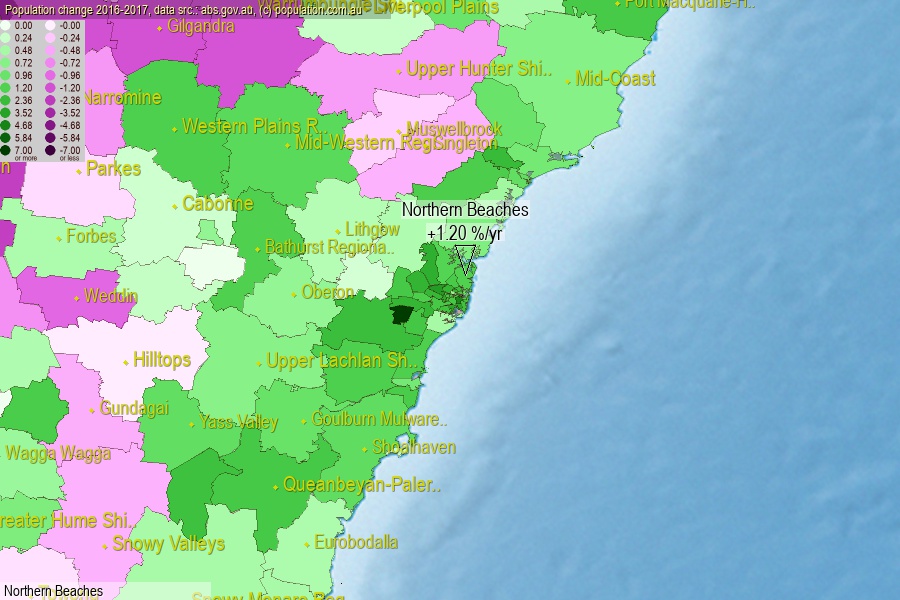 population.com.au
population.com.auLast official estimated population of Northern Beaches Area (as Local Government Area) was 268 666 people (on 2017-06-30)[2]. This was 1.08% of total Australian population and 3.377% of NSW population. Area of Northern Beaches is 254.20 km², in this year population density was 1 056.91 p/km² . If population growth rate would be same as in period 2016-2017 (+1.2%/yr), Northern Beaches population in 2025 would be 295 677. [0]



Click to enlarge. Northern Beaches is located in the center of the images.
Population [people], population density [p./km²] and population change [%/year] [2]
[1996-2001] +1.59 %/Y
[2001-2002] +0.15 %/Y
[2002-2003] +0.02 %/Y
[2003-2004] +0.10 %/Y
[2004-2005] +0.57 %/Y
[2005-2006] +0.80 %/Y
[2006-2007] +1.49 %/Y
[2007-2008] +1.16 %/Y
[2008-2009] +1.94 %/Y
[2009-2010] +1.53 %/Y
[2010-2011] +1.39 %/Y
[2011-2012] +0.96 %/Y
[2012-2013] +1.14 %/Y
[2013-2014] +1.05 %/Y
[2014-2015] +1.11 %/Y
[2015-2016] +1.09 %/Y
[2016-2017] +1.20 %/Y
[0] Calculated with linear interpolation from officially estimated population
[1] Read more about LGA and Australian Statistical Geography Standard (ASGS) on abs.gov.au
[2] Population data from Australian Bureau of Statistics (Population and density: 2017; change: 2016-2017)
[3] Digital Boundaries: Australian Statistical Geography Standard (ASGS) 2016.